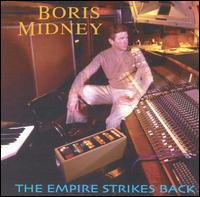
Russian born Midney is a man with many hats. A composer, arranger, producer, sound designer, engineer and multi-instrumentalist he is one of disco's most prolific artists. He literally created a whole new life for himself after defecting from the Soviet Union in his teen aged years.
After arriving in America Boris immediately became immersed in the New York music scene. Having a love for all types of music, he quickly formed a jazz group, "The Russian Quartet." The group became locally famous and this led to many opportunities for young Boris.

His first album was a rock-oriented effort released under the moniker "Black Russian." As with nearly all of his releases he would use a fictious group name to head each project. The eight tracks on "Black Russian" tell the story of a love affair. From it's beginnings ("Move Together") through it's heights ("Love's Enough") to it's bitter end ("Emptiness"). Since it's reissue it has seen more sales than when originally released on vinyl.
By 1978 Midney was poised to storm the charts. Taking his cues from Euro-disco he crafted the first of many avant-garde disco classics. Having nearly complete input, with the exception of vocals, guitar and co-engineering and producing duties his vision is clear.
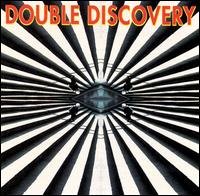
"USA-European Connection" is disco as an art form. The four tracks, each two mixed together form the basis of this release. "Come Into My Heart/Good Loving" and "Love's Coming/Baby Love" are high energy songs wrapped in swirling sound effects and lush arrangements.
Drug-induced dancers propelled the album to the top of the charts that summer and it marked a new era in disco music. In 1999 it found it's way onto compact disc and it sounds better than ever.
With his surprise success the pressure was on for an immediate follow-up. Boris gathered his coterie of players and returned to Alpha International Studios in Philadelphia for another quartet of tracks.
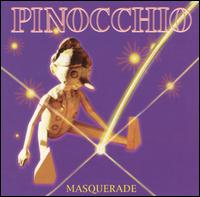
Also released in 1978, "Beautiful Bend" continues the formula of sparse vocals/lyrics with lengthy musical passages. "That's The Meaning," "Boogie Motion," "Make That Feeling Come Again" and "Ah-Do It" were all club favorites. Making it one of those rare albums that enjoyed complete disco exposure.
The artsy cover gives one a sense of what to expect inside. Midney seems to have taken Alec Costandinos concept of epic dance tracks and moved it to the next level. Whereas Costandinos is more 'uptown' Midney is pure 'downtown.'
The only flaw with it's reissue is the color, the original album cover was white.
1979 was disco's most commercial year ever. But unlike most, Midney didn't follow the trend but rather set it.
His sequel, "USA-European Connection 2" was similar yet different to it's predecessor. Different musicians and singers grace the tracks. But more importantly the recording venue was different. This was the first set of tracks recorded at his own Eras Recording Studios in New York City.
Once again the album contained only four tracks. "I'd Like To Get Closer," "Do Me Good," "Join The Dance" and "There's A Way Into My Heart" are all equally good. However unlike his previous two releases they were not all club hits.
The album did top the club charts and it's 1999 reissue brings it renewed success.
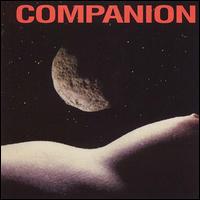
His second release for 1979 was under the title of "Caress." Once again the formula of studio, musicians and singers is repeated.
The move to release this under promoter-turned label head Ray Caviano's RFC label (distributed by Warner Brothers) failed to guarantee it's success.
"Catch The Rhythm," "Charmed," "You Got It Too Uptight" and "Love Spell" are all delicious tracks that have that Midney charm. But sales for the album were his weakest yet.
Ironically Caviano didn't distribute the album as freely as one would expect a former promoter to do. This may have hampered it's overall success, or it may have been the fact that in 1979 the market was just flooded with product.
It's reissue reminds of it's greatness and how even I missed the boat on it.
Boris was so popular in 1979 that he was placing product with different labels. His next release came out on Prelude Records, in one of their 2-12" D.J/ promo-paks. The trouble was that Masquerade's "Pinocchio" told a non-stop tale in seven acts. Luckily the reissued c.d. allows you to hear the entire story as Midney intended.
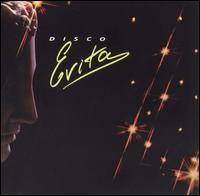
The standout tracks were: "Don't Leave Me Hanging" and "Open The Secret Door." The album actually ends with the same music that it begins with, to create a musical loop.
Even with it's use of his close knit group of musicians and singers the album failed to scale the charts like his previous efforts. But the effort is there and the quality is top notch.
That same year Robert Stigwood (RSO Records) called Boris and asked him to fly to England to see the new play "Evita." He wanted Midney to "disco-fi" the exsisting music and create a disco album, and that's exactly what he did. The "Disco Evita" album shot to #-1 on Billboard's Dance charts under the group name of Festival.
The success prompted Stigwood to request a disco album of the "Star Wars" sequel, "The Empire Strikes Back." The album did not score the results of "Evita" but remains enjoyable.

By 1980 disco was in the throes of it's demise, "disco sucks" was everywhere. Midney. perhaps burnt out from his massive output of the previous year, took most of the year off.
His one release that year was "Companion." I remember at the time thinking that the album was a dud. In hindsight it wasn't nearly as bad as I thought. I guess musically the club scene had moved on and it's timing was off.
I do remember programming the tracks "This Is A Test" and "Living Up To Love."

The fact that it wasn't released domestically didn't help it's popularity either. The reissue on c.d. has brought renewed interest in it. And in the scope of his overall career it is an essential piece.
A step back is often a good thing and Boris took that step for the remainder on1980 and all of 1981.
By 1982 he rebounded bigger and better than ever. Thanks to Patrick Cowley and the West coast disco-scene, high energy club music made a mutated comeback as "dance music" in the early 1980's.

Boris once again concocted a masterpiece under the guise of Double Discovery. The clubs were filled with the sounds of "Can He Find Another One?" The 12" wisely featured an "East Coast Side" and a "West Coast Side."
Label credit is given to Jim Burgess as a co-writer and an entire new crew of musicians were hauled in. Including Katharine Meyer on vocals. The album was rounded out with an odd assortment of leftover tracks from "Companion."
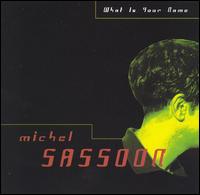
Boris then disappeared for nearly a decade, prompting many to wonder of he had died. But thankfully he resurfaced in 1990 as producer for Morgan Fisher's "Echoes Of Lennon," a collection of pictures and John Lennon songs.
Then came another decade of silence until he reissued his entire catalogue on compact disc in 1999 on his own OZ label. Luckily making many treasures available to a whole new generation.
Followed by his producing Michael Sassoon's "What Is Your Name" release in 2000.
1999 also marked a milestone as Midney once again entered the dance arena.

After 17 years he issued the hypnotic "Trancetter" album to rave reviews.
"Trancetter" is a set of progressive trance anthems aligned to superstar DJs like Paul Oakenfold and Sasha. The 12 tracks include some interesting fusions of old-school disco and new-style trance. And proves that his talent is still there.

Aucun commentaire:
Enregistrer un commentaire